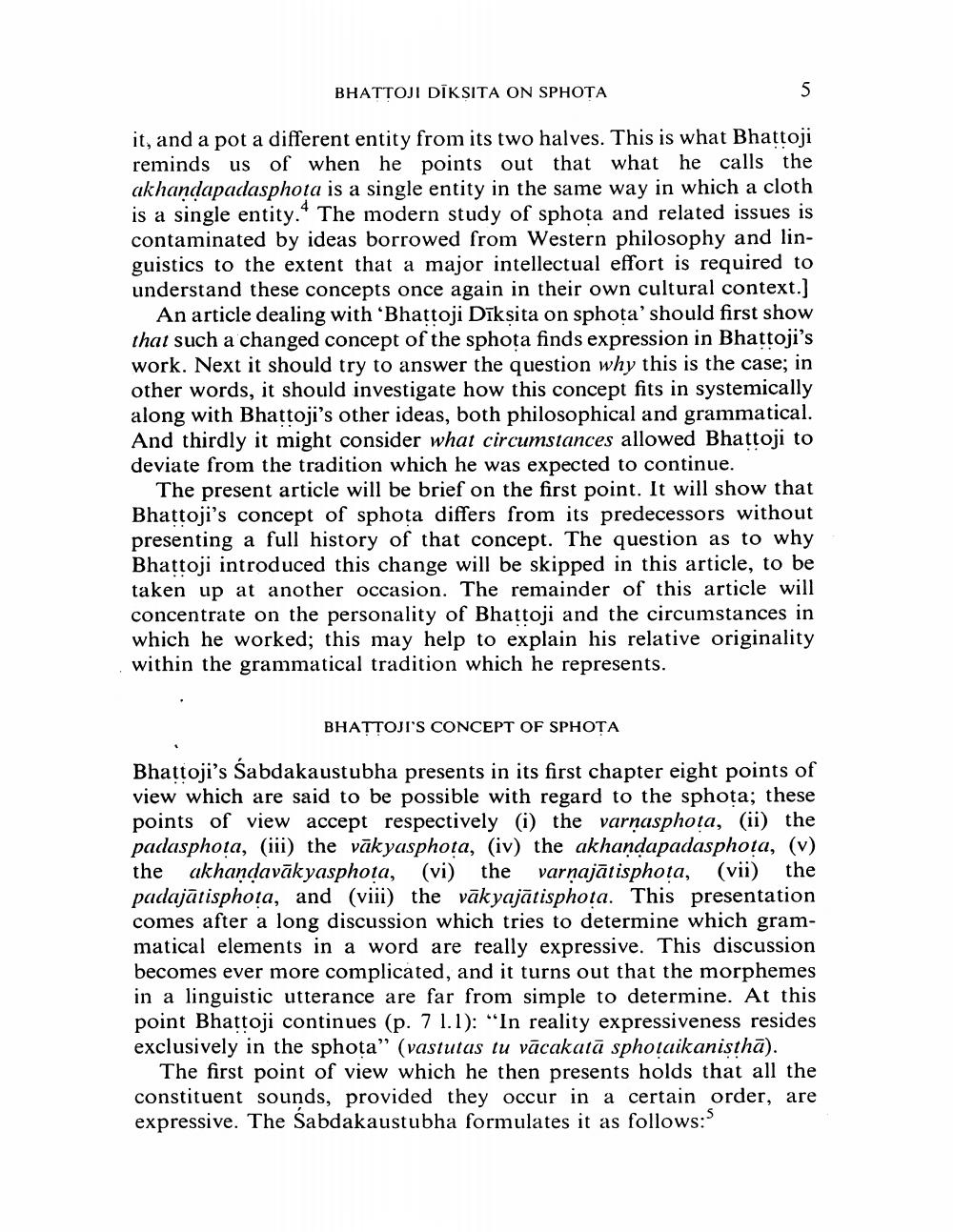Book Title: Bhattoji Diksita On Sphota Author(s): Johannes Bronkhorst Publisher: Johannes Bronkhorst View full book textPage 3
________________ BHATTOJI DIKSITA ON SPHOTA 5 it, and a pot a different entity from its two halves. This is what Bhattoji reminds us of when he points out that what he calls the akhandapadasphota is a single entity in the same way in which a cloth is a single entity. The modern study of sphota and related issues is contaminated by ideas borrowed from Western philosophy and linguistics to the extent that a major intellectual effort is required to understand these concepts once again in their own cultural context.] An article dealing with 'Bhattoji Dīkṣita on sphota' should first show that such a changed concept of the sphota finds expression in Bhattoji's work. Next it should try to answer the question why this is the case; in other words, it should investigate how this concept fits in systemically along with Bhattoji's other ideas, both philosophical and grammatical. And thirdly it might consider what circumstances allowed Bhattoji to deviate from the tradition which he was expected to continue. The present article will be brief on the first point. It will show that Bhattoji's concept of sphota differs from its predecessors without presenting a full history of that concept. The question as to why Bhattoji introduced this change will be skipped in this article, to be taken up at another occasion. The remainder of this article will concentrate on the personality of Bhattoji and the circumstances in which he worked; this may help to explain his relative originality within the grammatical tradition which he represents. BHATTOJI'S CONCEPT OF SPHOTA Bhattoji's Sabdakaustubha presents in its first chapter eight points of view which are said to be possible with regard to the sphota; these points of view accept respectively (i) the varṇasphota, (ii) the padasphota, (iii) the vakyasphota, (iv) the akhandapadasphota, (v) the akhandavākyasphoṭa, (vi) the varṇajatisphota, (vii) the padajatisphota, and (viii) the vākyajātisphoṭa. This presentation comes after a long discussion which tries to determine which grammatical elements in a word are really expressive. This discussion becomes ever more complicated, and it turns out that the morphemes in a linguistic utterance are far from simple to determine. At this point Bhattoji continues (p. 7 1.1): "In reality expressiveness resides exclusively in the sphota" (vastutas tu vācakatā sphoṭaikanisthā). The first point of view which he then presents holds that all the constituent sounds, provided they occur in a certain order, are expressive. The Sabdakaustubha formulates it as follows:5Page Navigation
1 2 3 4 5 6 7 8 9 10 11 12 13 14 15 16 17 18 19 20 21 22 23 24 25 26 27 28 29 30 31 32 ... 39
